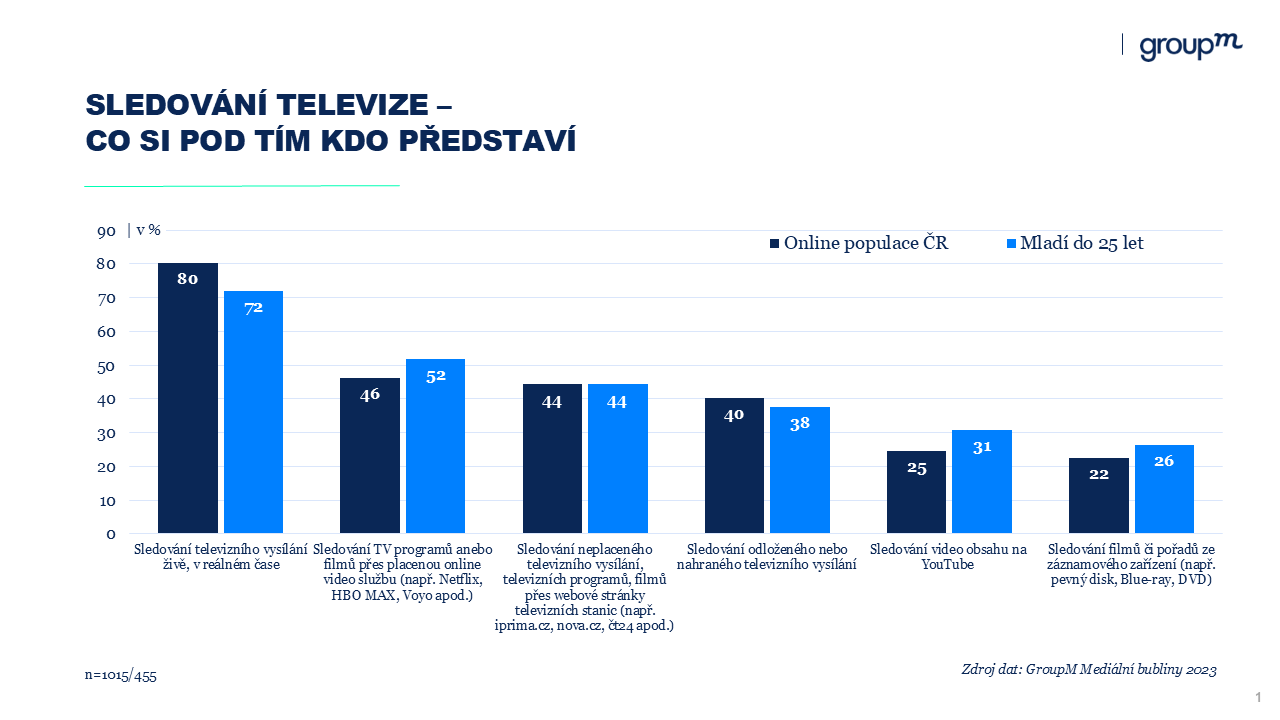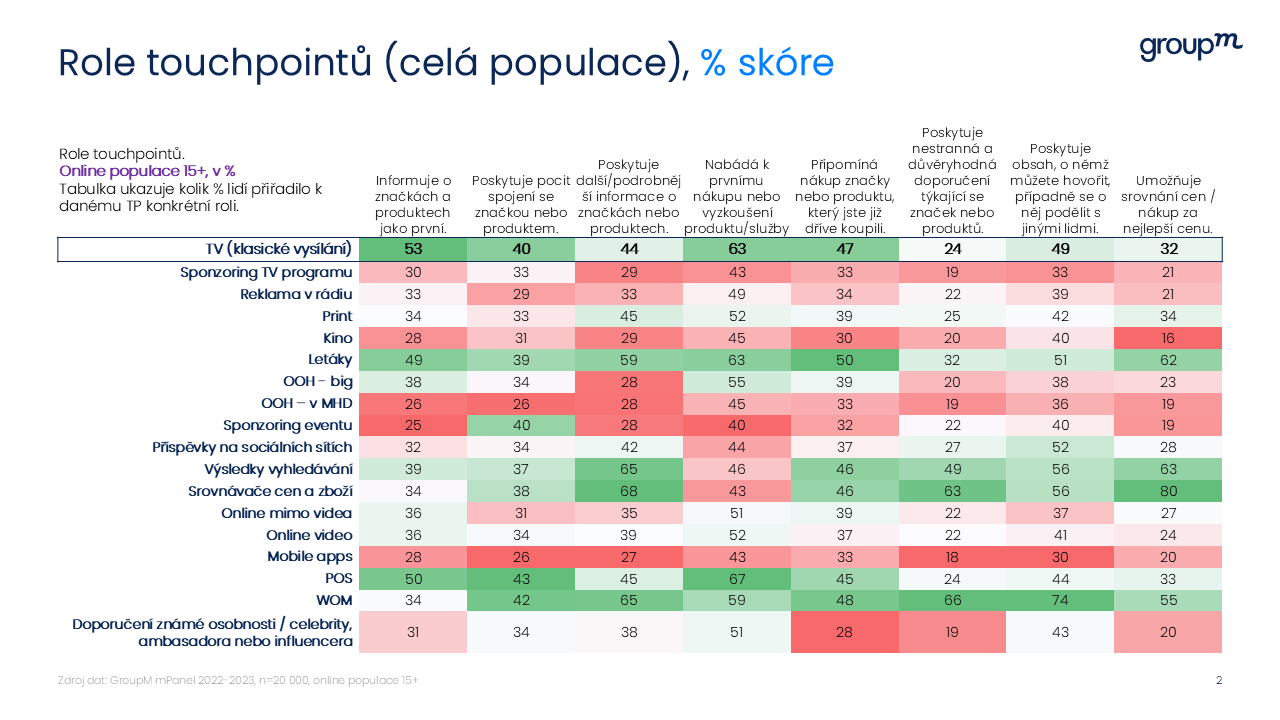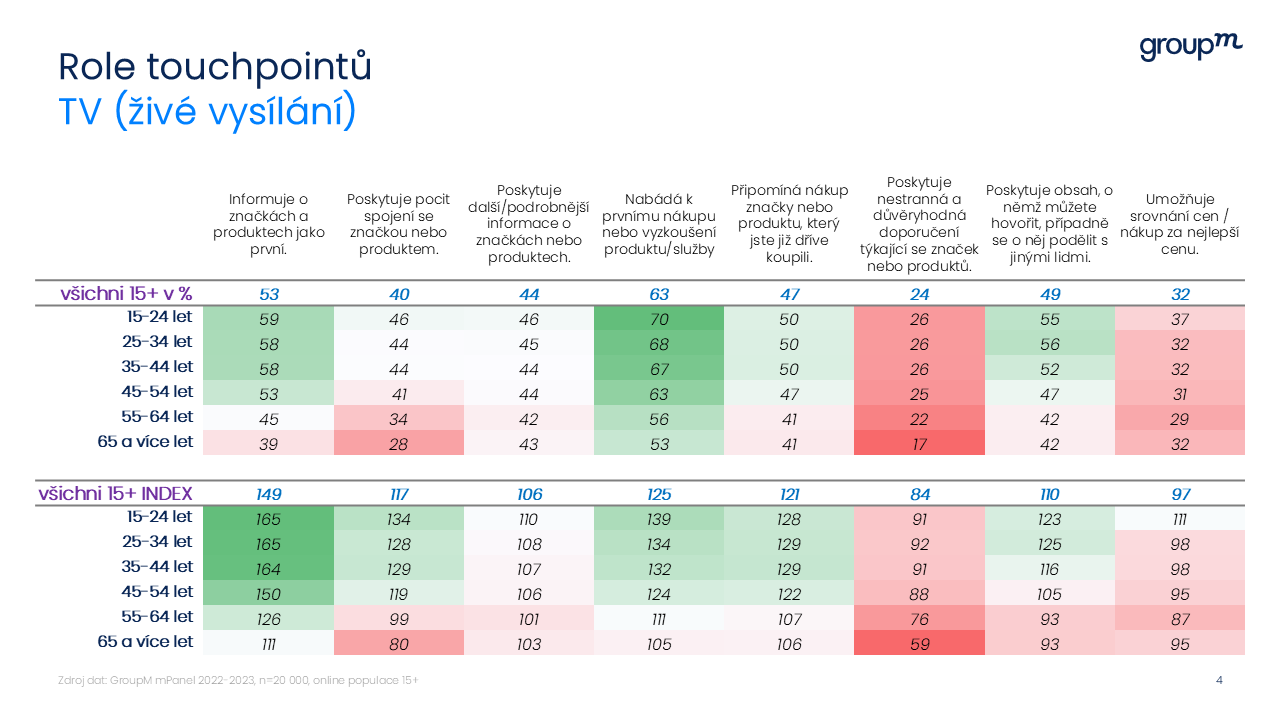TV viewing surveys
The question of how often people watch television has been the subject of dozens of studies. The results of these studies are used, among other things, for media planning. Although everyone might seem to know what watching TV means, clarifying the concept and asking viewers about their understanding appears to be a good idea. This is what the GroupM project Media Bubbles is doing. It examines the differences in media habits between the general Czech online population (which includes about 92% of the total population) and people from media and advertising agencies. In addition, the latest survey took a closer look at young consumers under 25.
What does it mean to watch TV?
Let’s briefly summarise what people mean when they say they watch TV. For 80% of the Czech online population, watching TV is equivalent to watching a live broadcast in real time. Among young people under 25, 72% have the same understanding. However, watching TV includes watching pay VOD services for almost half of the population. A quarter of the population (and 31% of the young under 25) even include YouTube in watching TV.
Watching TV – what does that mean?
 Source: mPanel
Source: mPanelWhat is the role of classic television as a touchpoint?
An interesting point is the role of classic television as a touchpoint, especially in advertising. Another project called mPanel has addressed the issue of touchpoints. The project is the main data source that GroupM uses to study Czech viewers’ media and consumer behaviour.
In 2022 and 2023, for each of the touchpoints listed in the table below, the survey focused on their use on the one hand and their role on the other:
- Informing (first) about brands and products.
- Conveying a sense of connection to a brand or product.
- Providing more detailed information about brands or products.
- Encouraging you to buy or try a service for the first time.
- Reminding of a brand purchase or a previously purchased product.
- Providing impartial and trustworthy brand or product recommendations.
- Providing content to talk about or share with other people.
- Enabling price comparison/buying at the best price.
Role of touchpoints (total population), % score
 Source: mPanel
Source: mPanelClassic TV as a touchpoint
In the opinion of ordinary Czechs, classic television is not doing badly in terms of its influence. TV can even be said to be among the most influential touchpoints.
It performs particularly well in support of purchasing products or services – it ranks among the three most powerful touchpoints. The same applies to providing the product information among the first. In this respect, classic TV is in first place. It also performs well in conveying a sense of connection with the brand. It is again among the top three touchpoints.
Television is relatively the weakest in providing impartial recommendations. However, most touchpoints do not do well in this respect, except perhaps for internet searches and price comparisons (and, naturally, classic peer-to-peer recommendations).
Role of touchpoints (total population), index
 Source: mPanel
Source: mPanelEven the young appreciate the power of TV as a touchpoint
Although it might seem that classic TV scores well, especially among older age groups, this is not the case. The table below shows that although younger consumers watch less classic TV than older age groups, they rate the strength of this touchpoint significantly better than older viewers. It is clear, therefore, that television remains well-positioned and far from being solely reliant on the favour of older audiences.
Touchpoint roles – TV (live broadcasting)
 Source: mPanel
Source: mPanelTelevision is a highly effective advertising channel
Even in this day and age, oversaturated with social media and mobile apps, television has an indispensable place. The big screen reaches a wide range of audiences across different demographic groups both in big cities and smaller communities. Its massive reach can also effectively address target groups that might otherwise be difficult to reach through other media.
Credibility is also an immense strength of television. Many viewers perceive advertising on TV as credible. This can positively influence their opinion of the products advertised. Brands appearing on TV often have a stamp of prestige and this can play a key role in consumers’ purchasing decisions.
In addition, television is an excellent tool for creating brand awareness. Compelling visuals and repeated ads help viewers remember the brand and its message. Combined with well-chosen broadcast times, for example during popular shows or sporting events, ads can achieve maximum impact.
A key factor for media agencies and brands is also the effectiveness of TV ads and the ability of the big screen to hold attention – where TV is unrivalled, as recent researches show.
Television remains one of the most important advertising channels and has its place in the marketing mix of big brands and start-ups alike.


